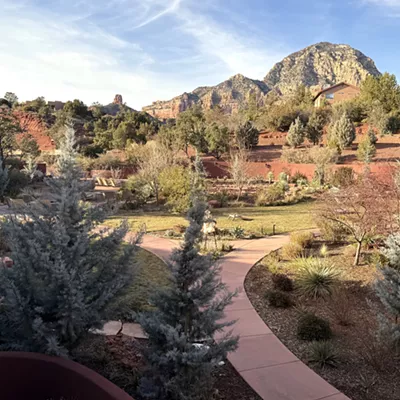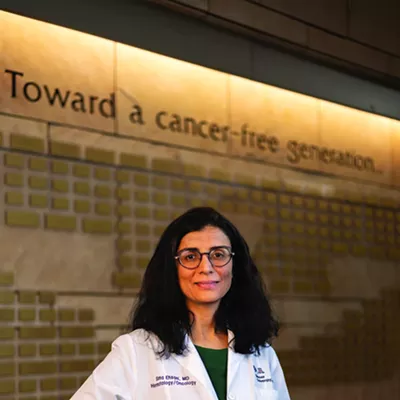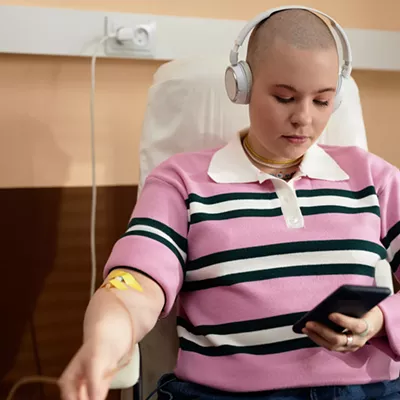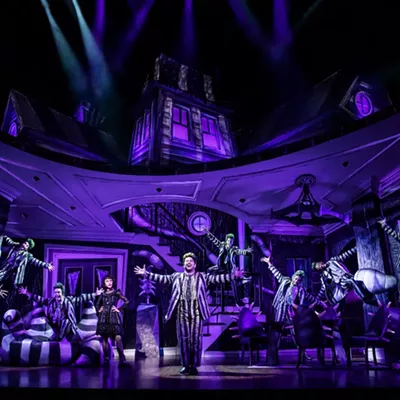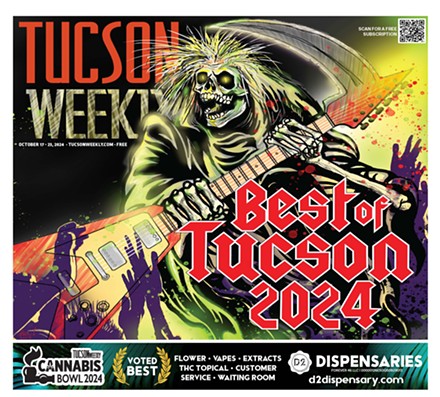Walkup's solution, a transit-light plan that would have raised the city sales tax by a half-cent to mostly widen roads on the city's perimeter and begin the transformation of Grant Road into a mini-parkway, met with opposition from both neighborhood and business groups, as well as supporters of mass transit. Even though the city spent more than $750,000 promoting the plan (and more than a million dollars overall when you throw in the cost of the election), it was solidly rejected by roughly seven out of 10 voters.
Since then, Walkup, a Republican now running his first re-election campaign, has essentially given up on the idea that the city of Tucson can handle its transportation challenges. Instead, he proposes shifting the bulk of the problem to a regional transportation authority that would take over major transportation planning for the city, county and the suburbs. (Both the city and county would retain their own transportation departments to deal with local road repairs and other smaller work.)
By handing off the problem, Walkup says, the community can "get the politics out of transportation."
Democrat Tom Volgy, the former Tucson mayor who wants to take his old job back in the Nov. 4 election, says the public should have a role in planning transportation solutions through the political process.
"Politics is going beyond people's conflicts to bring them together," Volgy says. "What he means by politics, I think, is, 'Get it off my back.'"
Walkup's transportation authority is the first step in his plan to reinvent the political landscape by merging city and county governments. (See "Waffling Heights," Oct. 2.) He envisions the Legislature will give the community a green light to create the taxing authority next year, and local voters will go to the polls by May 2004 to approve a new level of government that would take over planning not only the future of Grant Road, but also an interstate bypass south of Tucson near Sahuarita and the widening of Tangerine Road on the northern perimeter of the community.
Although Volgy says the city needs to do a better job of coordinating with the county, he says Walkup's regional authority is a bad idea.
"It's a nonsense plan," Volgy says. "A regional authority can do one of two things: It can plan a regional future, or it can take the heat off the city and county and let them abdicate their responsibilities for transportation. What you're going to end up with is another layer of government superimposed over these two layers of government with its own taxing ability unresponsive to city residents."
Even if Walkup succeeds in his effort (and his track record at the Legislature and the ballot box doesn't inspire much confidence), he won't have solved the problem; he'll merely have created a new way of addressing it.
So what are his priorities for improving transportation inside the city limits, whether or not voters approve a new authority?
Walkup would like to extend the current bridge that carries Kino Parkway above Aviation Parkway so it also goes over 22nd Street. He wants to do more work on Aviation Parkway where it meets Golf Links Road. He wants to get bridges built on Houghton Road to expand its capacity. And he wants to work on improve bottlenecks on Grant Road so that the city can retire the "suicide lane" that carries morning and evening rush hour traffic.
As for the contentious issue of a series of expensive grade-separated intersections on Grant Road, which would allow traffic on Grant to tunnel beneath major cross-streets, Walkup isn't sure if he supports them anymore--but he doesn't rule them out.
Volgy opposes the grade-separated intersections, which he calls a "disaster," but he does support a similar alternative: a series of "bantam intersections." These miniature grade-separated intersections would allow just one lane in each direction to travel underneath traffic on cross-streets, while cars and trucks in the other lanes would remain at ground level and have to stop at red lights. Since the intersections are smaller and don't require as much right-of-way, Volgy estimates they could be built for $3 million apiece, although he doesn't have any hard figures to back up the proposal.
Volgy doesn't know exactly where he'd build these intersections; he's vague when asked where such intersections have been put to use in other parts of the country. He says there are "two or three cities" using them and points to Connecticut Avenue in Washington, D.C.
Volgy says there are two other keys to solving the transportation: repair of residential streets and expansion of the bus system. He says both those areas would be covered by the transportation proposition on the November ballot, which is why he's thrown his support behind it, although he's careful to say it's only part of the solution.
Walkup opposes the transportation prop, but says he also supports fixing neighborhood streets and improving the bus system, even though he expects it will bring a marginal increase in ridership.
Neither candidate says where he'll find the money for buses if the November proposition fails.
AND THAT'S WHERE you'll find the real challenge with the entire region's transportation challenges: None of these grandiose ideas can be accomplished without money.
Even as he calls for better regional transportation planning, Walkup is well aware that there already is a body doing that job: The Pima Association of Governments, or PAG.
One of PAG's main responsibilities is crafting a transportation plan that forecasts transportation needs through the next 25 years. PAG's most recent plan, which extends through 2025, assembled a long list of transportation improvements that are estimated to cost a staggering $10.7 billion.
PAG officials estimate that only $6.6 billion is available for those projects. Even if the state increases the gas tax, the county imposes a quarter-cent sales tax and all jurisdictions start charging impact fees, the total revenue available will still fall short by more than $2 billion.
The unmet needs for roads and amenities within the city limits alone stand at somewhere in the neighborhood of a half-billion dollars. Roughly $200 million of that figure is needed just to repair neighborhood streets, which have been long neglected.
There's little money available for widening major arterials, says Jim Glock, head of the city's transportation department. He says the only major projects on the horizon are building a new Fourth Avenue underpass, improving Harrison Road between Speedway Boulevard and Old Spanish Trail, and expanding a short stretch of Wetmore Road west of Oracle Road.
Given that sorry state of affairs, city residents may just have to resign themselves to dodging potholes and waiting in traffic no matter who wins in November.





